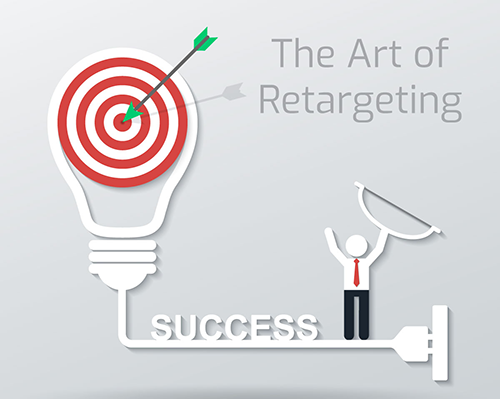The Art of Retargeting
Imagine yourself meeting someone interesting at a pub but for some reason didn’t have the chance to exchange numbers. Suddenly the day after, you bump in this person in a shop next door. I believe you won’t spare a chance to exchange numbers and start a relation.
Well the above example my friend is exactly what we describe in marketing as Retargeting.

By definition, Retargeting is the process of advertising to a specific and targeted audience who previously visited your website, used your mobile application, and in some cases, visited your offline store.
Let me give you an example; how many times have you visited a website and continued your online navigation journey then you saw an advertisement for the same website. This is what retargeting is all about.
It’s almost impossible to convert a first-time visitor to your website into an actual buyer unless someone recommended your website to this visitor or you really have a catchy deal that can’t be missed. However, in normal situations, studies have shown that up to 98% of your website new visitors leave without doing any conversion.
Through retargeting you will keep your brand in front of your targeted audience and increase the potential of indirect conversion from visitors that already are familiar with your brand and website.
So, in short, Retargeting helps you to:
- Reconnect with people who previously expressed their interest in your services
- Re-engage with them through presenting your brand in ads
- Convert interested visitors to leads and then to customers
- Build brand awareness of your brand
Great, how to start?
Well you have couple of methods for retargeting. The first which is the most common and most used is the website retargeting.
To start your retargeting campaign, you need to setup a tracking pixel and add it to your website. This tracking pixel will collect general data from the visitors of your website and serve them ads in their next web journey.
The tracking code which is a snippet of JavaScript code is generated from the advertising channel you want to use to retarget. For example, if you wish to launch your retargeting campaign through Google AdWords, you need to generate the tracking code from AdWords’ Dashboard and add it to your website. If you are to launch your campaign through Facebook or Twitter, you need to add the pixel of each channel respective into your website.
You might want to know that tracking and building up process might take a time from 2 to 4 weeks until you have a proper retargeting pixel delivering good results.
Another method of retargeting is through uploading a list of email addresses you collected from your database or through submission forms and serve them ads accordingly. This is mainly used on Facebook and Twitter; however, chances are that the effectiveness of your retargeting campaign solely depends on the success of your match rate between the email you’ve collected, and the emails associated with their social channels.
Retargeting Best Practices
In order to launch a good retargeting campaign that pays off, I advise you to follow these steps:
Select the retargeting network you want to use
There are many retargeting networks globally serving ads and presenting good dashboards. I haven’t got the chance to check them all, but can name few of the most commonly used ones such as Google AdWords, Facebook, Twitter, and last but not least is AdRoll which I have been using for clients quite a time and results being achieved are amazing. One of the techniques you might want to consider is running your campaign through multiple channels and test results.
Make sure your retargeting code is set up properly and working fine
One of the basic things you need to check is whether your code is implemented correctly on your website otherwise you will not be able to start your campaigns. In order to make sure things are correct, you can download for free some extensions that help you see whether your tag is functional or not such as Google Tag Assistant, Facebook Pixel Helper and Ghostery.
Start your campaigns
Now that your codes are set properly, you will need to start building your campaigns. Keep in mind that your campaigns should be appealing enough, and brand related so that visitors could directly relate when seeing your ads. Make sure to consider your mobile-friendly ads when launching the campaigns as studies recently showed that mobile retargeting is quickly gaining popularity.
On another note, I advise you to segment your campaign into products and categories. Do not launch general campaigns for anyone who visits your website. For example, if someone visits your luxury product page, then serve him ads of luxury products not technology and vice versa. This will help you in being really detailed and selective and would deliver very detailed results. You might also want to consider the steps for building a successful campaign before launching your ad.
Done, what’s next?
Well before you monitor the results and ROI, you need to understand that you will never get good results through your retargeting campaign if you only added the codes and launched the campaigns; you need to have good traffic to your website. Back to the roots, retargeting are campaigns served for people who previously visited your website, and in case you do not have visitors then your retargeting campaign is useless. Here’s an article I previously written that helps you increase your website traffic.
Finally, I consider that retargeting is a very powerful marketing tool that is still untapped from lots of digital marketers. It serves as a pure opportunistic technique for retrieving missing leads and bring them back to your sales funnel. It also plays a great brand connection between your products and your potential customers on different platforms and through different means.
If you’re a marketer and would like to learn more details about Retargeting, join our upcoming marketing workshop.




